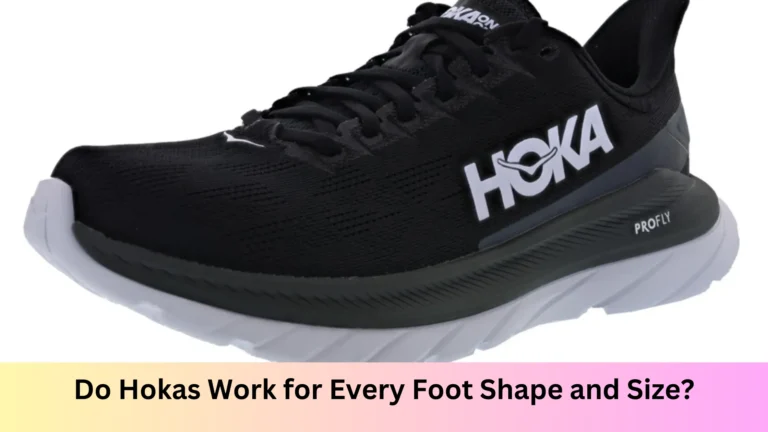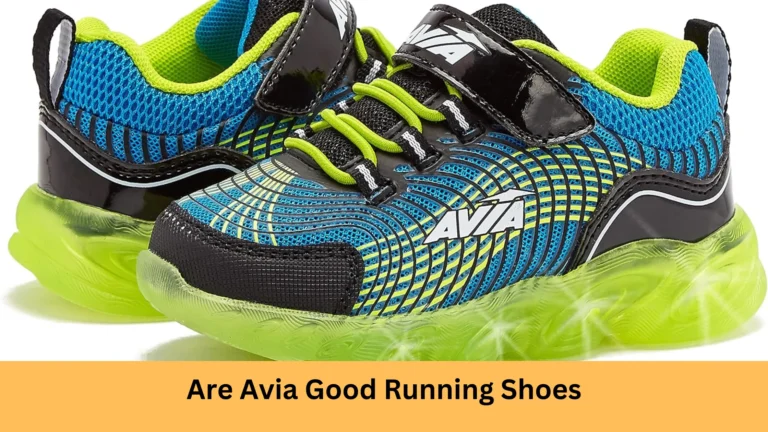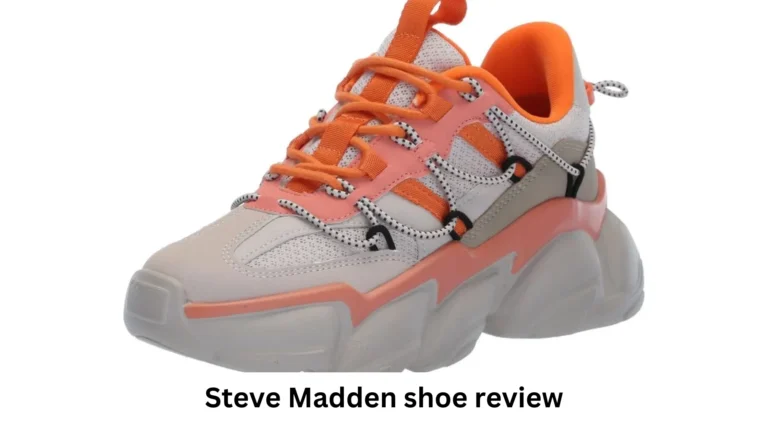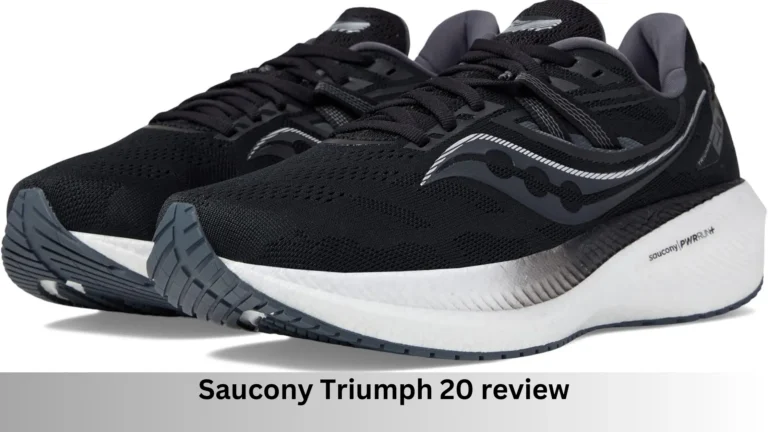
Running in the rain might be refreshing and even exhilarating. But with experience, seasoned runners already know that wet conditions reduce the lifespan and performance ability of your running shoes, so understanding how rain degrades your running shoes to learn how to care for them properly can prevent premature damage and maintain their perfect performance.
In the next section, we’ll talk about how rain could change the performance of your running shoes, what to look out for in a rainy run, and how to keep them perfect even in rainy seasons.
How Does Running in the Rain Affect Your Shoes?
Rain can hit the shoe’s upper and sole material during a run. Most shoes are designed for everyday use and therefore may not cope well with long-term wetness. Here’s the way rain specifically affects all different parts of your shoe:
Wearing and tear of the upper material
Most running shoes feature breathable mesh or fabric upper that keeps your feet cool. Unfortunately, this material type absorbs water easily which may weaken the fabric over time. These wetting and drying cycles can make these fibers stretch, loosen, and even break down, thus making a difference in the structural integrity of your shoe.
Lower Cushioning and Midsole Performance
There exists a foam midsole based on cushioning for runners. When those absorb the water, they immediately temporarily lose their springy return, and supporting them makes your run uncomfortable to endure. The foam tends to degrade faster every time, thus shortening the duration of usage of your shoes.
Single Contact Persuasion
Wet surfaces combined with muddy trails or slick pavements can cause the outsole to wear down sooner. Waterlogged rubber does not have the same friction, which is dangerous when running on challenging ground. The constant exposure also makes the sole softer so that it wears down more quickly than usual.

Choosing the Right Shoes for Running in the Rain
While most running shoes are not completely waterproof, some features make certain pairs better suited for wet conditions. Here are qualities to look for when choosing shoes for rainy runs:
Water-Resistant or Waterproof Uppers
Look for shoes with a water-resistant or waterproof upper to help keep your feet dry. Gore-Tex® or other water-repellent materials are great at preventing water from soaking in. However, these may limit breathability slightly more than traditional mesh fabrics.
Better Traction Outsoles
For reduced slipping, select shoes with a durable, grippy outsole. Rubber compounds designed for wet and muddy conditions are beneficial, as are trail running shoes if you frequently run in the rain. Deep lugs or multidirectional treads help you keep your feet under you on slippery surfaces.
Quick-drying materials
Quick-drying shoes will recover faster from a run in the rain. Look for synthetic or blended shoes that will repel water but may dry if wet, thus preventing long-term damage caused by dampness.
Also See: Do Nine West Shoes Run Small? Let’s Find Out!
Caring for Your Shoes After a Rainy Run
Proper post-run care helps maintain your shoes in top condition. The following is the best method to dry and maintain your shoes in case of rain:
Clean away unwanted mud and debris
After a dirty, muddy run remove as much dirt and debris as possible. Clean the exterior with a brush or damp cloth, paying special attention to the outsoles. Leaving mud on your shoes can cause materials to harden, which weakens the structural components of the shoe.
Avoid Direct Heat When Drying
Do not dry out your shoes by placing them in a clothes dryer or just before an open heater. It contains high temperatures that damage the adhesives and generally weaken the structure of the shoe. Stuffing with newspaper or paper towels inside the shoe can absorb the moisture it contains, and then one may replace the paper at intervals for faster evaporation.
Allow Shoes to Air Dry Completely
Lay out your shoes in a well-ventilated area, where they can dry normally. Make sure they dry completely before the next run; wet shoes can lead to odors, discomfort, and even blisters.
Use a waterproof spray
Sprays that can be applied to the shoes may provide additional protection. Sprays act as a push-back layer of rain and mud, thus keeping the shoes drier and cleaner in the run.
Common Myths About Running Shoes and Rain
There are several myths about running shoes and rain that lead to misconceptions. Here are a few we’d like to debunk:
Myths: Waterproof Shoes Save Your Feet from Wetness Forever
Waterproof shoes keep moisture out but are not foolproof for heavy rain. Water may enter from the top if your socks or ankles are exposed.
Myths: Run in the rain and ruin any pair of shoes
While rain encourages people to wear, care and drying techniques are usually enough to save most running shoes from deterioration even if exposed often to wet conditions.
Myth: Wet roads or trails are unsafe to run on for any shoes
There are the right outsoles in the right shoes for wet surface running, not running in the rain. The right footwear lets you run safely on wet trails and roads with negligible risks.
When Should You Replace Running Shoes Exposed to Rain?
Exposing running shoes to rain doesn’t necessarily mean they’ll need replacement sooner, but repeated exposure to moisture may affect durability over time. Replace your shoes if:
- The soles have worn down and lost their grip.
- The midsole feels significantly less cushioned and springy.
- The upper has tears or loses its structure.
Generally, running shoes last between 300-500 miles. Running in wet conditions may bring this lifespan closer to 300 miles, especially if you don’t care for them properly after each run.
Frequently Asked Questions About Running in the Rain
Does Running in the Rain Affect Shoe Fit?
Although water does temporarily stretch most shoe materials, there is no need to worry because once dried wholly, the shoes should regain their fitting shape.
Will it safely run with wet shoes?
Wet shoes may cause blisters and discomfort during a run. Drying your shoes thoroughly before your next run is ideal for keeping them comfortable and preventing irritation.
What is the Best Way to Dry Wet Running Shoes?
Remove the insoles. Fill the shoes with newspapers and let them air-dry. Never expose shoes to direct heat sources since they may ruin them.
Running in the rain is cool but also hard on shoes. Proper preparation as well as post-run care, can help keep the shoewear going. Rightly chosen materials increase the traction of footwear, while proper use of drying techniques can diminish the effects of wet runs. Rainy days don’t have to mean skipping a run; with a few simple adjustments, you can keep your shoes in excellent condition and hit the trails or roads with confidence.

Hello, I am Natasha Rose. I am the founder of the website Best Running Shoes. I am from California, USA. I am a professional shoe analyzer and an employee in a shoe showroom. I like to provide information about all types of shoes.





